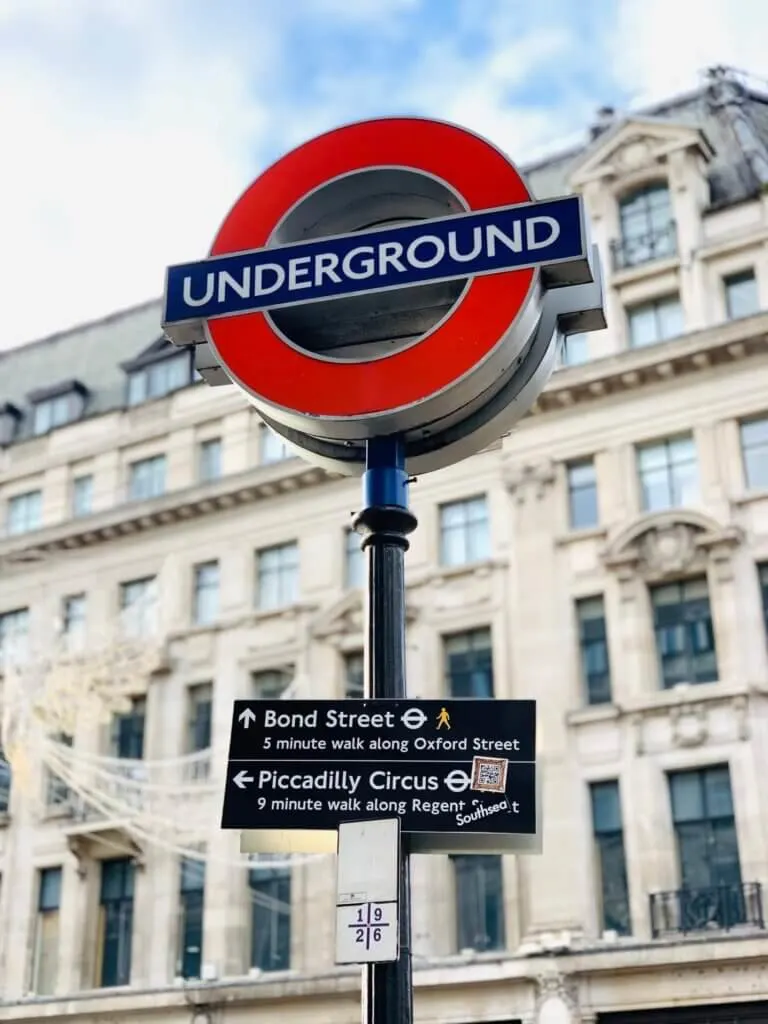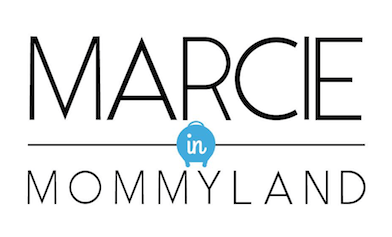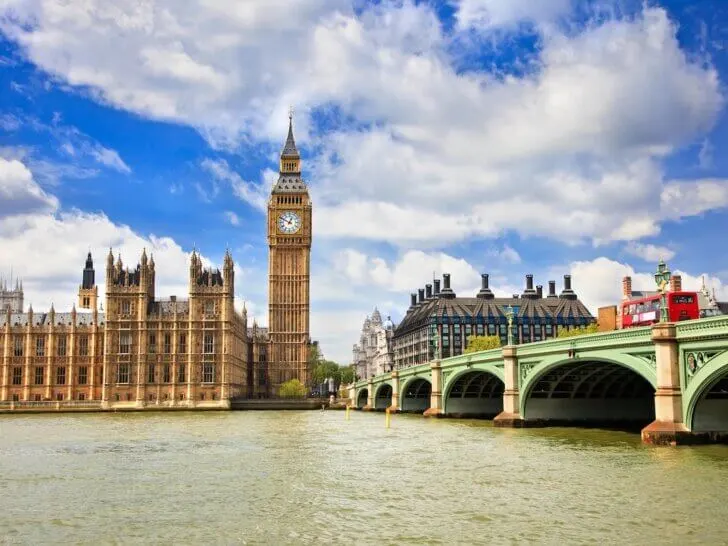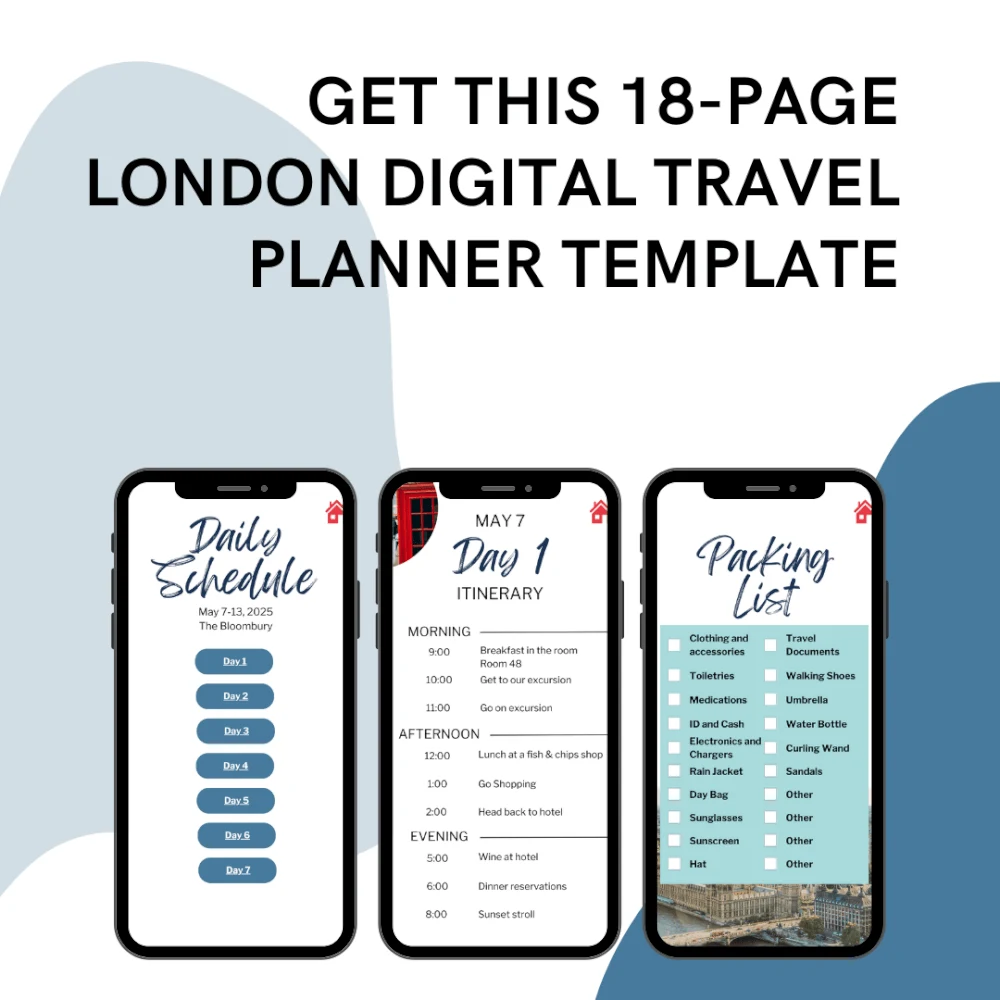Are you planning your first trip to London? Keep scrolling to find out the top things I wish I knew before going to London.
This list of things I wish I knew before going to London England was co-written by family travel expert Marcie Cheung and may contain affiliate links, which means if you click on the link and purchase the item, I will receive an affiliate commission at no extra cost to you. All opinions remain my own.
Guest post by Kristin Secor
London is one of the most visited cities in Europe but it can be a little overwhelming trying to plan a trip if you’ve never been there before.
As someone who has traveled to this iconic city on a number of occasions, I’ve rounded up my top tips for things I wish I knew before going to London and other travel tips to help you be prepared for your trip.
20 Things I Wish I Knew Before Going to London
Get an Oyster Card
If you plan on taking public transportation (which is the easiest way to get around), you’ll need to get an Oyster Card to pay for your ride as you aren’t able to use cash.

This smart card comes preloaded for hassle-free payments on various modes of transportation in London, including buses, Tubes, trams, DLR, London Overground, Elizabeth Line, River Bus, and most National Rail services.
Ordering online is a swift and simple process, ensuring you have it in hand before your journey. Additionally, it offers cost savings compared to purchasing individual trip tickets. Secure your Oyster Card now for a convenient and budget-friendly travel experience.
London is Wheelchair Accessible
As someone with mobility problems, I often get asked where to travel to. My first international trip was to London, and I too had accessibility concerns. I did not need to worry however, as London is one of the most accessible cities in Europe.
There are plenty of wheelchair-accessible things to do in London and public transport can accommodate wheelchairs. Additionally, at many attractions, people with disabilities can receive discounted or free admission with proof of disability.
I found the primary challenges to accessibility being a step into a restaurant, crowded sidewalks, and cobblestones in some areas.
Most Museums are Free
If you are traveling to London on a budget, you’ll be happy to know that many of the museums and art galleries are free.

Furthermore, there are plenty of options to choose from to suit any interest. Some of the most popular are the British Museum, the Natural History Museum, and the Tate Modern art gallery.
Just know that some exhibits and special events in the museums may come at a cost. However, the majority can be enjoyed in their entirety for no cost.
Don’t Pack Too Much into Your Itinerary
With so many amazing things to do in London, first-time visitors (including myself) try to pack in as much as possible to their itinerary.
Unfortunately, this leads to unrealistic expectations and you never get to fully enjoy the sight or attraction that you’re seeing because you’re so focused on getting to the next thing on your list.

Additionally, London is a very busy city and it can take a lot longer to get from place to place than you may expect, especially during rush hour traffic.
Do yourself a favor and don’t try to see all the major sights in 1-2 days. It’s just not going to happen. Instead, prioritize the things most important to you and plan to come back for another trip to explore more of this incredible city.
I’ve been to London at least three times and still haven’t gotten to see everything yet.
Weigh the Benefits of the London Pass
The London Pass can help save you money if you are visiting multiple attractions with an entrance fee.
However, if you are planning on only doing one or two paid attractions and supplementing the rest of your time with free things to do in London, you’ll want to compare the price of individual tickets vs the pass to ensure you’re getting the most for your money.
The London Pass includes free entry into 80 top attractions and landmarks, a hop-on hop-off bus tour, a river cruise, and other potential discounts. See whether it makes sense for you based on your plans in London.
Don’t Drive Unless Necessary
I mentioned before that traffic can be chaotic in London. So, ditch the car and rely on excellent public transportation to get around.
If you are arriving to London by car, look for hotels that offer parking and keep your vehicle there until you leave. This will prevent you from the hassle of dealing with traffic and trying to find parking.
Public transportation is easy to use and travels near all the highlights that people visit the city for. To find the best route and transportation option, make sure to use this app, which also has the option of filtering your results to include accessible routes.
Choose Where You Stay Carefully
Choosing where to stay in London is probably one of the biggest decisions of your trip and there are pros and cons to each choice.

While staying in the city center offers an excellent location for exploring the most popular sights, it can also be quite expensive.
On the other hand, staying outside of the main tourist area can be cheaper, it also means you will need to factor in more travel time to get to the attractions you want to visit.
Honestly, there is no right or wrong answer when choosing where to stay and it will depend on your budget, how long you have in the city, and whether you want to do day trips.
As a result, I recommend staying in a hotel that is close to public transportation to give you the most options during your visit.
And, if you are looking for wheelchair-accessible hotels in London, there are options in both the city center as well as surrounding neighborhoods.
However, I do recommend contacting the hotel to ensure that their accessible rooms meet your individual needs( i.e. room under the bed for a hoist, bed height, toilet height, etc.).
Pack Appropriate Footwear
Let’s face it, you’ll be doing a lot of walking in London. To prevent pains and sores, plan to pack comfortable shoes that have been broken in.
Stylish sneakers or shoes with adequate support and padding are the best options.
Be Prepared for Rain
When you think of London weather, you probably think of rain. Showers can pop up in any season and any time of day so be prepared by always carrying an umbrella or raincoat.
Since rain is fairly common, don’t let it ruin your trip or sightseeing opportunities. When you bring the right gear, it will allow you to still explore and enjoy your trip.
Leave Time for Day Trips
While you’re unlikely to run out of things to do in London, make sure to leave some time for London day trips in your itinerary. The city is an excellent base to travel to nearby places such as Stonehenge, Bath, Windsor Castle, and more.

The train system offers several options for do-it-yourself day trips, or alternatively, you can choose to book a guided tour for direct point-to-point access.
By booking the tour option, you also have the opportunity to ask questions and get in-depth knowledge about the places you visit.
Take Note of School Breaks and Special Events
In addition to the breaks and holidays that we are used to in the United States (summer, Easter, Christmas), in the United Kingdom there are also half-term breaks where students get a few weeks off in February, May, and October.
During this time you may see more families traveling within the UK and areas such as London. As a result, there may be increased crowds during this time.
Additionally, there can be special events going on that may make the city more crowded. While some events can occur unexpectedly (like the death of the beloved Queen Elizabeth) others are planned and announced in advance (King Charles’s coronation for example).
During these times many places in London may shut down and crowds are to be expected.
Do at Least 1 Walking or Guided Tour
A walking or guided tour is an excellent way to learn about the history and culture of this incredible city. Likewise, sometimes, these tours offer added benefits.

For example, if you join a walking tour for the changing of the guard at Buckingham Palace the tour may have dedicated viewing areas so that you don’t need to be at the palace at the crack of dawn just to get a decent view.
There are also popular special interest tours such as the Harry Potter walking tour, the Jack the Ripper Tour, and a Beatles tour which fans can participate. Each of these tours visit significant sites related to the topic of the tour and are loved by tourists.
Be Mindful of Lines or Queues
It will be common for you to find lines or queues in London as things are often very orderly. Please keep an eye out for these lines and take your place at the back. It is rude to cut ahead or to be oblivious to proper procedures for waiting or entrance.
The exception to this is that people with disabilities and wheelchair users are often (but not always) allowed to skip the line as they can snake around and be difficult to navigate if you have a mobility device. Watch for an attendant to guide you in this case.
Bring the Right Adapter
The UK has different outlets than the rest of Europe so make sure you have the right adapter to be able to charge your devices.
Instead of a two-prong rounded outlet, the UK uses the Type G electrical socket which has three rectangular prongs in a triangular pattern.
I love using an international adapter so I’m prepared for the most popular types of outlets. It doesn’t take up much room in your bag and is perfect for when you’re visiting multiple countries on one trip.
Remember What Way to Look When Crossing the Street
In London (and the rest of the UK) it is standard to drive on the left-hand side of the road. That means when crossing the road, pedestrians will need to look to the right first and then the left (which is the opposite of what you do in the United States.

Not remembering this important detail can lead to injury and accidents. Sometimes, there are reminders on the pavement in front of you to help avoid incidents.
Prebook Tickets in Advance
Popular attractions mean larger crowds and longer wait times. To help avoid wasting time in line, make sure to pre-book your entrance tickets in advance. This will help ensure you get to see the sights on your bucket list at your desired time.
Likewise, some of the most popular tours will sell out during peak travel season. Look for available skip-the-line tickets and tour options on Viator or Get Your Guide to make the most of your trip.
Keep Your Valuables Safe
As with most major cities, pickpocketing can be a common issue in London. As a result, it’s important to not only be aware of where your valuables are at all times but also take measures to protect them.
Steps to ensure their safety may include wearing a money belt, using a day bag with built-in anti-theft features, or not putting your wallet in your back pocket.
It’s also important to be aware of your surroundings and not get distracted by taking photos or using your phone.
Watch for Transportation Closures and Strikes
In Europe, strikes and transportation closures are not uncommon and if you’re not expecting them, they can put a snag in your travel plans.
Be prepared by watching for announcements and updates regarding any potential transportation delays, closures or worker strikes that may affect your trip. The app I mentioned earlier is one way to monitor this information.
Familiarize Yourself with Local Language
Alright, hear me out on this one. Yes, they speak English in London and if you’re coming from an English-speaking country you may question this tip.
However, it’s more accurate to say that they speak British, which means while there are a lot of words that are common with English, there are some that can be different.
I’ve listed a few examples below for reference. While I usually could figure out what people meant, it is helpful to know some of the language differences.
Loo = bathroom (toilet is also acceptable)
Cheers = thanks
Lift = elevator
Queue = line
Bin = trash
Boot = trunk (used in the context of a car)
Cashpoint = ATM
Trainers = tennis shoes
Chemist = Drug Store
Biscuit = cookie
Chips = french fries
Crisps = chips
Ground floor = first floor
Petrol = Gas
Pram = Stroller
London is Expensive
As with most major cities, London is expensive so be prepared that it won’t likely be the cheapest trip you take. However, it is possible to visit London on a budget by flying in low season (aka winter), shopping at local markets for meals, and taking advantage of the free activities that the city has to offer.

Checking places like Skyscanner will help you find the best airfare deals for your trip. Additionally, plan to stay outside the city center for better hotel prices.
Other London Tips for First-Time Visitors
Currency is Pounds Sterling
The UK uses Pounds Sterling as its currency and does not accept the Euro. So, if you are coming from another European country, you won’t be able to use that currency while in London.

However, like the Euro, the Pound Sterling consists of a variety of coins and bills. Small denominations such as $1 and $2 can be found in coins along with 1 penny and 2-50 pence.
Expect a Large Breakfast
A traditional English Breakfast is not a small meal. It consists of two eggs (typically fried), bacon and/or sausage, baked beans, and a tomato slice.
This hearty meal will help keep your energy fueled for a day of exploring. However, some may find it too filling and want a nap afterward.
Check to see if your hotel offers a free breakfast like this as it’s a great way to save money on meals while in London.
Take an Uber Boat on the Thames
During my first few visits to London, it didn’t occur to me to take a cruise on the Thames. When I finally did, I loved it because I could see some of the iconic sights from a different perspective.
Additionally, there are Uber Boats that make several stops along the river to allow passengers on and off. If traffic is really bad in the city, this is one option that may be faster while offering a scenic view.
The Electrical Current is 230V
While most devices in this day and age can handle dual voltage (the United States uses the 110V system), not all may have this capability.
Make sure to check things like hair dryers, curling irons, cameras, and other electrical items to ensure that they can handle the voltage difference. Otherwise, if it can’t, you’ll need a converter or risk blowing up your device.
You Can Easily Add on Amsterdam or Paris
As a result of well-connected trains, visitors to London can easily combine their trip with other popular European cities such as Amsterdam or Paris. Both are excellent options for an add-on to your vacation.

Technically, if you were up for a long day trip, you could take the train from London to Paris, spend the day there, and then take the train back. While you won’t be able to see everything, it would give you a taste of what Paris has to offer.
Similarly, if you were spending a week in Europe, you could easily divide your time between London and Amsterdam allowing you to see two popular cities in one trip.
Many tourist attractions in Amsterdam will suit a variety of interests and create an amazing trip.
London Travel FAQs
Do You Tip in London?
Tipping customs in London, as in the rest of the UK, differ somewhat from those in the United States. While tipping is appreciated for good service, it is generally not as extensively practiced, and service charges may already be included in the bill.
For example, restaurants often include a service charge to the bill so tipping is not necessary. Likewise, hotels may also a charge to your bill for tips.
However, tipping is expected when using a taxi, you have a tour guide, and for deliveries. When using a taxi, it is customary to round up the fare to the nearest pound, and tipping 10% for guides and deliveries is the norm.
What is the Best Time to Visit London?
The best time to visit London will depend on what type of experience you want during your trip.
Typically, the best time is whenever you have availability to go, but just understand that there are definitely worst times to visit London based on crowds, weather, and prices.
You’ll get the best prices and fewer crowds in the winter months, but the weather won’t be the nicest. Instead, the summer months have the best temperatures but come with higher costs and more people.
However, visiting in Spring or Fall can offer the best combination of lower costs, mild weather, and not as many tourists as the peak travel season.
Should I Get Pounds Before I Go to London?
In my experience, many places such as stores, attractions, and restaurants accept major credit cards like VISA so you won’t need much cash on you. Cash does come in handy for smaller purchases though.
Also, note that American Express is not widely accepted in Europe and the UK.
Furthermore, make sure to check that your credit card doesn’t have a foreign transaction fee which will add to the cost of any purchase. And, when given the option, always have the merchant charge you in local currency as their exchange rates aren’t the best.
How Long Should I Spend in London?
If this is your first trip to London, I recommend spending at least four days in the city. This will allow you to see most of the major sights within the city. However, if you want to add a day trip to your itinerary, having five days in London is more optimal.
That being said, I often spend only two days in London en route to other cities or before boarding a cruise ship in Southampton.
Two days in the city will allow you to see some highlights but certainly not everything. Prioritize your time and what you want to see and plan to come back on another trip.
What Do Americans Need to Enter the UK?
Americans wanting to travel to the UK will need a valid passport for the entire duration of their trip that has at least one blank page. A VISA is not required unless your visit is longer than 6 months.
However, regulations can change at any time so it’s important to monitor for adjustments to these requirements and ensure you have everything required before your trip.
While travel insurance is not required, it is something I highly recommend as medical problems can happen suddenly, be costly, and your regular health insurance may not offer coverage for international trips.
Recap on the Things I Wish I Knew Before Going to London
I truly hope that this list of things I wish I knew before going to London has helped prepare and guide you on what to expect during your trip.
It is a wonderful city and I do not doubt that you will have a fantastic time during your vacation. You may even start planning your next trip there on your plane ride home.
Author Bio:
Kristin Secor is an avid traveler despite being born with a rare form of Muscular Dystrophy which affects her strength, balance, endurance, and breathing. Thus far, she’s been to 20 countries across 4 continents. However, London remains one of her favorite cities. She writes about her travels and shares important resources and information to make planning accessible travel easier on her wheelchair-accessible travel blog World on Wheels Blog.
Looking for more London travel resources? Check out 8 Exciting Things to do in East London With Kids, 11 Terrific Things to Do in London with a Toddler, Making the Most of London in a Day, 15 Lovely London Tours for Families Worth Booking, and 11 Thrilling Things to Do in London at Night!





